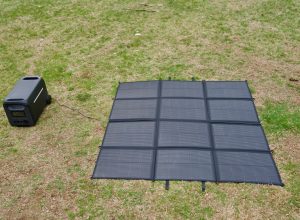Many questions surround the area of RPA and test automation. For instance, is RPA a testing tool? Is RPA similar to test automation? These questions can be quite challenging to answer, as there are virtually hundreds of opinions and views on the matter. RPA replicates the actions of a human using the same interface they would use, while testing automation is more of direct integration with IT at the data level. This article seeks to highlight the main differences between Robotic Process Automation software and Test Automation software.
First things first: what is RPA?
To fully understand the difference between the two forms of technology, you must have a clear understanding of what RPA is. Robotic process automation is technology that helps you automate routine tasks to optimize business processes. Thanks to switching from manual to automatic, many businesses have reported a significant increase in efficiency and reduction in redundancy. RPA is an excellent choice for you if:
- You want to automate tedious, repetitive, and time-consuming tasks that demand accuracy or some procedure or standards to be followed.
- You intend to leverage AI for your business
- You want to apply it across varying industries.
RPA can further be categorized into simple and cognitive RPA types. Simple RPA is applicable for routine tasks that demand little intelligence, for instance, data entry. However, cognitive RPA is better applied in jobs that require additional thought, or cognition, such as customer service.
What is test automation software?
This is a form of technology that allows you to control the execution of tests and compare the actual outcomes with predicted outcomes. This software allows you to automate the execution of your test case suite and generates detailed reports from the tests. Testing automation software brings many advantages to the business, including:
- The ability to test multilingual sites more effectively
- Cost reduction
- Eliminates the need for human intervention
- Better accuracy
Testing automation can have hefty initial costs, which is why the following criteria are used to determine cases that will have the highest ROI from automation:
- High-risk business projects
- Test cases that are difficult to perform manually
- Time-consuming cases
- Test cases that are repeatedly executed
Differences between the two:
The system under automation
Both RPA and test automation offer the same advantages: automation to reduce redundancy and enhance cost-effectiveness and accuracy. However, RPA and test automation software are applied to different systems, depending on the concept. For instance, when running an e-commerce store, testing automation software may be used to evaluate the online store’s functionality. However, the RPA can be applied to run other tasks, such as data entry for inventory and daily report generation. Testing automation software can only be applied to a product and its features, while RPA can be used to both products and processes.
Span of application
Testing automation software is specifically designed to test web-based and GUI systems. RPA, on the other hand, can automate processes in virtual machines, both desktop and web-based systems, back-end processes, legacy systems, and many others. Moreover, testing applications can be applied in different environments, such as QA and UAT, while RPA can only be run in the production environment.
Differences in the types of testing
RPA can also be used for testing functions, only that the overall experience compared to that when using Testing Automation software is different. While testing automation software may demand a deeper understanding of IT and coding skills, testing with RPA requires little or no coding skills. Moreover, RPA is a testing tool, but only for a general level.
Application of common testing tools
Unlike testing automation software where you can readily apply tools like Selenium, QTP, and QF-Test, you may not use the same for RPA. These tools require a software platform to run on, which makes them unsuitable for RPA. For now, none of the testing tools in the market can serve as an RPA tool.
Conclusion
Often, confusion regarding RPA and testing automation systems result from the similarities the two share: the fact that they both offer automation and the same advantages. Hopefully, the illustrations above will help clear the confusion and shed more light on the two forms of technology.



